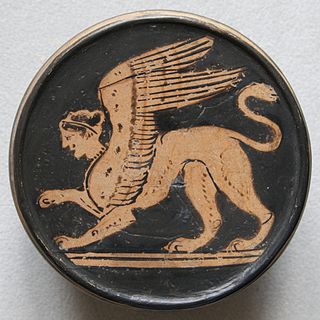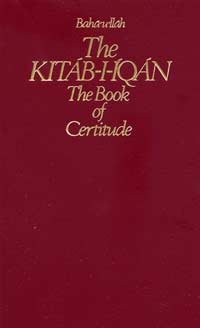Related Research Articles

Zoroastrianism, also called Mazdayasnā or Beh-dīn (بهدین), is an Iranian religion centred on the Avesta and the teachings of Zarathushtra Spitama, who is more commonly referred to by the name Zoroaster. Among the world's oldest organized faiths, its adherents exalt an uncreated, benevolent, and all-wise deity known as Ahura Mazda, who is hailed as the supreme being of the universe. Opposed to Ahura Mazda is Angra Mainyu (𐬀𐬢𐬭𐬀⸱𐬨𐬀𐬌𐬥𐬌𐬌𐬎), who is personified as a destructive spirit and the adversary of all things that are good. As such, the Zoroastrian religion combines a dualistic cosmology of good and evil with an eschatological outlook predicting the ultimate triumph of Ahura Mazda over evil. Opinions vary among scholars as to whether Zoroastrianism is monotheistic, polytheistic, henotheistic, or a combination of all three. Zoroastrianism shaped Iranian culture and history, while scholars differ on whether it significantly influenced ancient Western philosophy and the Abrahamic religions, or gradually reconciled with other religions and traditions, such as Christianity and Islam.

A sphinx is a mythical creature with the head of a human, the body of a lion, and the wings of an eagle.

The Kitáb-i-Íqán is a book written by Baháʼu'lláh, the founder of the Baháʼí Faith. It is the religion's primary theological work and one of many texts that Baháʼís hold sacred. It is considered the second most important book in the Baháʼí writings, with the most important being the Kitáb-i-Aqdas. One Baháʼí scholar states that it can be regarded as the "most influential Quran commentary in Persian outside the Muslim world," because of its international audience.
Middle Persian literature is the corpus of written works composed in Middle Persian, that is, the Middle Iranian dialect of Persia proper, the region in the south-western corner of the Iranian plateau. Middle Persian was the prestige dialect during the era of Sasanian dynasty. It is the largest source of Zoroastrian literature.

The Epistles of Manushchihr (Minocher) are a response to comments made by the author's brother on the subject of purification in Zoroastrianism.

A daeva is a Zoroastrian supernatural entity with disagreeable characteristics. In the Gathas, the oldest texts of the Zoroastrian canon, the daevas are "gods that are rejected". This meaning is – subject to interpretation – perhaps also evident in the Old Persian "daiva inscription" of the 5th century BCE. In the Younger Avesta, the daeva's are divinities that promote chaos and disorder. In later tradition and folklore, the dēws are personifications of every imaginable evil. Over time, the Daeva myth as Div became integrated to islam.

Istakhr was an ancient city in Fars province, five kilometres north of Persepolis in southwestern Iran. It flourished as the capital of the Persian Frataraka governors and Kings of Persis from the third century BC to the early 3rd century AD. It reached its apex under the Sasanian Empire, and was the hometown of the Sasanian dynasty. Istakhr briefly served as the first capital of the Sasanian Empire from 224 to 226 AD and then as principal city, region, and religious centre of the Sasanian province of Pars.

Bushyasta is the Zoroastrian demon (daeva) of sloth. Her stock epithet is "the long-handed".

As described in the 9th century Zoroastrian text Dadestan-i Denig, hamistagan or hamēstagān is a neutral place or state for the departed souls of those whose good deeds and bad deeds were equal in life. Here these souls await Judgment Day. Meanwhile, those who did mostly good experience bliss and those who did mostly evil suffer torment. Religious Decisions was written in Persia when Islam was replacing Zoroastrianism as the majority religion.

The kushti also known as kosti, kusti and kustig is the sacred girdle worn by invested Zoroastrians around their waists. Along with the sedreh, the kushti is part of the ritual dress of the Zoroastrians.

In Modern Persian, the word Īrān (ایران) derives immediately from 3rd-century Middle Persian Ērān (𐭠𐭩𐭫𐭠𐭭), initially meaning "of the Aryans" before acquiring a geographical connotation as a reference to the lands inhabited by the Aryans. In both the geographic and demonymic senses, Ērān is distinguished from the antonymic Anērān, literally meaning "non-Iran".

Khvarenah (also spelled khwarenah or xwarra(h): Avestan: 𐬓𐬀𐬭𐬆𐬥𐬀𐬵xᵛarənah) is an Avestan word for a Zoroastrian concept literally denoting "glory" or "splendour" but understood as a divine mystical force or power projected upon and aiding the appointed. The neuter noun thus also connotes "(divine) royal glory", reflecting the perceived divine empowerment of kings. The term also carries a secondary meaning of "(good) fortune"; those who possess it are able to complete their mission or function.

A barsom is a ritual implement used by Zoroastrian priests to solemnize certain sacred ceremonies.
The Mēnōg-ī Khrad or Spirit of Wisdom is one of the most important secondary texts in Zoroastrianism written in Middle Persian.

Gavaevodata is the Avestan language name of the primordial bovine of Zoroastrian cosmogony and cosmology, one of Ahura Mazda's six primordial material creations and the mythological progenitor of all beneficent animal life.
The Dana-i Menog-i khrat, or 'opinions of the spirit of wisdom', a Middle Persian book which was written about 8th century. It comprises the replies of that spirit to sixty-two inquiries, or groups of inquiries, made by a certain wise man regarding various subjects connected with the Zoroastrian religion. This treatise contains about 11,000 words, and was long known, like the Shikand-gumanic Vichar (53), only through its Pazand version, prepared by a Persian zoroastrian writer, Neryosang in middle age.
Dr. Sir Ervad Jivanji Jamshedji Modi (1854–1933), who also carried the title of Shams-ul-Ulama, was a prominent Zoroastrian Parsi-Indian priest, scholar and community leader in Bombay. One of "the most decorated priests in history", he wrote over 70 books, produced over 120 scholarly papers on Zoroastrian history, traveled and researched into Zoroastrian affairs extensively and was instrumental in organizing the Parsi community in India. During his lifetime he had been called "the greatest living authority on the ancient history and customs of the Parsis." He created a facsimile edition of the Middle Persian legal treatise, Mādayān ī Hazār Dādestān in 1901.
Ādurfarrōbay ī Farroxzādān was a 9th-century Zoroastrian high-priest who served as the leader of the Zoroastrian community of Fars in Iran. His first name has the meaning 'The (Sacred) Fire Farrōbay', the Farrōbay fire being one of the three preeminent Ādurs of Iran. He was the son of a certain Farroxzād, and is known to have held a religious disputation in 825 at the Abbasid court with the former Zoroastrian turned Manichaean named Abāliš / Abdallāh, called "an apostate", with the former Iranian name Dēn-Ohrmazd. Ādurfarrōbay managed to win the debate and Abdallāh was removed from the Abbasid court.

Xwedodah is a type of consanguine marriage to have been historically practiced in Zoroastrianism before the Muslim conquest of Persia. Such marriages are recorded as having been inspired by Zoroastrian cosmogony and considered pious. It was a high act of worship in Zoroastrianism, and there were punishments for not performing it.

Zoroastrian literature is the corpus of literary texts produced within the religious tradition of Zoroastrianism. These texts span the languages of Avestan, named after the famous Zoroastrian work known as the Avesta, and Middle Persian (Pahlavi), which includes a range of Middle Persian literature.
References
- ↑ Shaki, Mansour (15 December 1993). "DADESTAN Ī DENIG". Encyclopædia Iranica . Retrieved 30 April 2012.